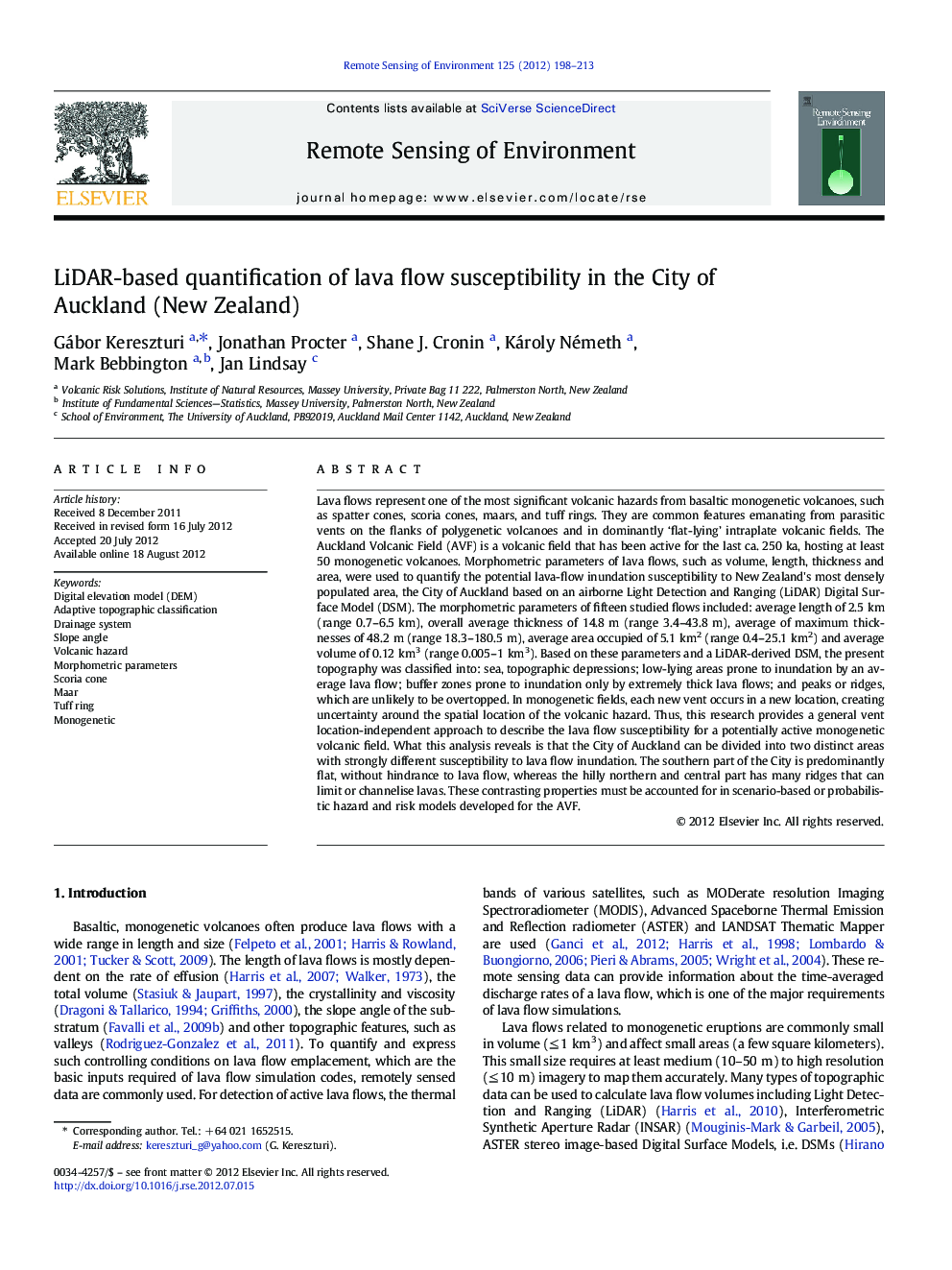| کد مقاله | کد نشریه | سال انتشار | مقاله انگلیسی | نسخه تمام متن |
|---|---|---|---|---|
| 4459131 | 1621275 | 2012 | 16 صفحه PDF | دانلود رایگان |

Lava flows represent one of the most significant volcanic hazards from basaltic monogenetic volcanoes, such as spatter cones, scoria cones, maars, and tuff rings. They are common features emanating from parasitic vents on the flanks of polygenetic volcanoes and in dominantly ‘flat-lying’ intraplate volcanic fields. The Auckland Volcanic Field (AVF) is a volcanic field that has been active for the last ca. 250 ka, hosting at least 50 monogenetic volcanoes. Morphometric parameters of lava flows, such as volume, length, thickness and area, were used to quantify the potential lava-flow inundation susceptibility to New Zealand's most densely populated area, the City of Auckland based on an airborne Light Detection and Ranging (LiDAR) Digital Surface Model (DSM). The morphometric parameters of fifteen studied flows included: average length of 2.5 km (range 0.7–6.5 km), overall average thickness of 14.8 m (range 3.4–43.8 m), average of maximum thicknesses of 48.2 m (range 18.3–180.5 m), average area occupied of 5.1 km2 (range 0.4–25.1 km2) and average volume of 0.12 km3 (range 0.005–1 km3). Based on these parameters and a LiDAR-derived DSM, the present topography was classified into: sea, topographic depressions; low-lying areas prone to inundation by an average lava flow; buffer zones prone to inundation only by extremely thick lava flows; and peaks or ridges, which are unlikely to be overtopped. In monogenetic fields, each new vent occurs in a new location, creating uncertainty around the spatial location of the volcanic hazard. Thus, this research provides a general vent location-independent approach to describe the lava flow susceptibility for a potentially active monogenetic volcanic field. What this analysis reveals is that the City of Auckland can be divided into two distinct areas with strongly different susceptibility to lava flow inundation. The southern part of the City is predominantly flat, without hindrance to lava flow, whereas the hilly northern and central part has many ridges that can limit or channelise lavas. These contrasting properties must be accounted for in scenario-based or probabilistic hazard and risk models developed for the AVF.
► A LiDAR-based adaptive topographic classification is presented.
► Topography-based quantification of lava flow susceptibility and volcanic hazard.
► Watershed-based delimitation of volcanic hazard in a GIS environment.
► The southern part of Auckland is flat with lack of topographic depressions.
► Future lava flow in the northern part of Auckland is likely to be channelized.
Journal: Remote Sensing of Environment - Volume 125, October 2012, Pages 198–213